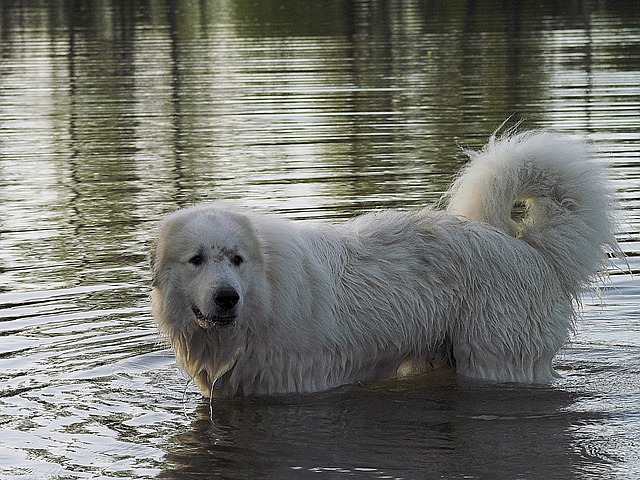Are Climate Change is Also Affecting Dogs ? Due to the rising temperatures, certain parasitic diseases appear in our climate, which were previously characteristic only for coastal areas. Therefore, protection of dogs from parasites and insects should be carried out throughout the year.
Most people have the impression that spring has long since arrived. Experts say that February 2020 was the warmest in the history according some measurements. People endure this “abnormal” weather in different ways, but it seems that most are still looking forward to the warm weather and the summer ahead.
Experts are constantly warning about the consequences of global warming and climate change and how they will affect people and all living things… But are we aware of how these changes affect our pets?
Temperature
What even a layman can notice is that the temperatures are higher than in previous years. This means that we can expect that spring temperatures will be above average, especially in summer. As a result of elevated temperatures, heart attacks, dehydration and heat stroke occur more frequently in dogs. This is especially pronounced in brachiocephalic dogs (eg pug and boxer), who already have difficulty with cooling.
Cooling
Dogs do not have sweat glands like humans and their main “cooling system” is their tongue. This is especially important if you are taking your dog for a walk with a muzzle. The muzzle must be such that the dog can open its mouth and stick out its tongue. Under no circumstances should you use muzzles that completely close the dog’s mouth. These are mostly cloth muzzles used by veterinarians to fix the mouth of dogs during examinations or some interventions.
Hydration
If you go for long walks, bring water for your pet. Hydration is just as important for dogs as it is for humans. Monitor your pet, his behaviour, breathing, tongue, colour. Take a break from activities if you notice that he is getting tired. Running a bicycle or electric scooter can quickly tire a dog. The dog itself will not tell you if it is tired and will certainly not stop, but will follow in your footsteps. That’s why you have to watch out for him.
In the house, car…
Under no circumstances should you leave your dog alone in the car waiting for you. Don’t let March deceive you and make you think that it is still not warm enough for the car to warm up… An open window is not enough to prevent the dog from overheating, or even the appearance of heat stroke. Temperatures vary considerably during the day and you should take care of that. Don’t be fooled by the morning low temperatures, because during the day they can rise by ten degrees Celsius. Therefore, when you leave the house in the morning, leave your pet a bowl with enough water.
Parasitic diseases
And that was the easier part, because we can influence all of the above, as dog owners. What is harder (but not impossible) to influence are the changes related to the parasites that lurk in our pets. Climate change has led to the fact that some parasitic diseases that were previously characteristic only of coastal areas are now occurring in our country as well.
Annoying mosquitoes
Mosquitoes are insects that have been known in these areas for a long time, but it used to be known at what time of year we can expect them. With climate change and longer periods of high temperatures throughout the year, we can also find mosquitoes throughout the year. Mosquitoes transmit the parasites Dirofilaria immitis – the cause of heartworm disease, and Dirofilaria repens – the cause of skin heartworm disease, which occurs in both dogs and humans. Most mosquito repellents had a recommendation for use during the period of mosquito presence, which was previously easy to determine.
Now, mosquito protection should be adapted to the current climatic conditions and it should certainly be strengthened. There are spot-on preparations on our market based on imidacloprid and permethrin that provide protection against mosquitoes and can be used throughout the year. They have repellent on mosquitoes, ie. repellent effect. During the period of the greatest mosquito invasion, they can be safely used for seven days. In any case, it is recommended, in addition to the obligatory protection with some mosquito repellent, to avoid walks during the period of the greatest activity of mosquitoes, which is in the early dawn and early evening. It is also recommended to avoid walking near water surfaces.
On the other hand, in summer, when the temperatures are very high, most owners take their pets for a walk during these periods of the day. So be sure to check that your dog has adequate protection against mosquitoes.
Fleas and ticks
Climate change has also affected perhaps the most famous “attacks” of dogs – fleas and ticks. The warm weather has contributed to the fact that there is no more seasonality in the appearance of fleas, but we can find them throughout the year. Ticks usually “sleep” during the winter months. With the absence of real winters, ticks are active for a longer period of time during the year. Increased activity also means an extended mating period, and thus a larger number of ticks.
This requires continuous control throughout the year against all external parasites of dogs. This is not easy to report in the summer, because on the one hand you must take care not to damage the pads on your dog’s paws on hot asphalt, and on the other hand you should avoid grassy areas where ticks and fleas lurk.
Prevention is most important
Always make sure that your dog has adequate protection from the most important external parasites. It can be in the form of a spot-on preparation based on imidacloprid and permethrin, which has a repellent effect on ticks, mosquitoes, parasites, and also acts on fleas and parasites.
Most preparations on our market that provide protection against external parasites are applied for a month. If you have a problem remembering that you need to use the medicine again, there is a waterproof collar based on imidacloprid and flumethrin on our market, which provides protection for dogs for up to eight months.





